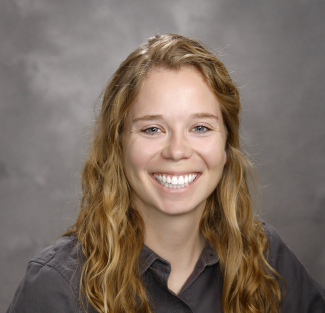Dr. Olivia Krohn, a former JILA graduate student and now a postdoctoral researcher at Sandia National Laboratories, has been awarded the prestigious Justin Jankunas dissertation award, given out by the American Physical Society (APS) division of chemical physics at the APS Global Summit conference. This award recognizes exceptional doctoral research that advances the frontiers of physics. Krohn’s award highlights her dissertation research, which bridges the legacy of JILA’s origins in astrophysics with its current role as a global leader in atomic, molecular, and optical (AMO) physics.
Krohn’s thesis, completed under the mentorship of JILA Fellow and University of Colorado Boulder physics professor Heather Lewandowski, investigates the ion-neutral gas-phase chemical reactions of interstellar relevance using cold arrays of trapped ions known as “coulomb crystals”. Her work explores the fundamental processes that govern the chemistry of space—particularly focusing on the elusive ion CCl⁺—within the controlled conditions of the laboratory.
“While ‘JILA’ once stood for the ‘Joint Institute for Laboratory Astrophysics,’ the name is now an acronym-less moniker signifying a research center that pushes the frontier of AMO physics,” says Krohn. “My dissertation is a great example that these two identities of JILA are still sometimes entangled.”
To trap and cool the cold ensembles into Coulumb crystals, an ultra-high vacuum (UHV) environment is needed to make the crystal. However, having the ions in UHV is not the only influence in creating Coulomb crystals. By doing this, Krohn could simulate key reactions of the interstellar medium. Her research not only provided insight into chemical networks that may help explain why CCl⁺ has yet to be detected in space but also advanced the understanding of how chemical reactions behave at temperatures close to absolute zero—where quantum mechanics begins to dominate.
A major component of her work also involved developing methods to pair a traveling wave Stark decelerator with the ion trap, an innovation that allows precise tuning of the collision energy between ions and neutral molecules.
“At the colder end of this spectrum, at collision energies equivalent to a few Kelvin,” she explains, “we can venture into regimes where quantum mechanics plays a more direct role on the chemical dynamics and push the frontier of studying fundamental chemical transformation to colder and more controlled systems.”
Dr. Lewandowski praised Krohn’s scientific leadership and creativity throughout her graduate career.
“This is a well-deserved recognition of the outstanding work Olivia completed for her Ph.D. dissertation,” Lewandowski says. “She was a true leader in these studies, which have important implications for chemistry in the interstellar medium. I was incredibly fortunate to have the opportunity to work with her during her time at JILA.”
Reflecting on the award, Krohn expressed gratitude for the community that supported her research.
“I was extremely humbled and grateful to receive this award,” she notes. “I am thankful for the amazing guidance of Heather and for the incredible teammates I worked beside in my Ph.D. I am indebted to support from my friends and family. And of course, I learned so much from our amazing JILA shop, support staff, and colleagues. It was a privilege to conduct my dissertation research at JILA.”
Written by Kenna Hughes-Castleberry, JILA Senior Science Communicator



 The Physics Frontiers Centers (PFC) program supports university-based centers and institutes where the collective efforts of a larger group of individuals can enable transformational advances in the most promising research areas. The program is designed to foster major breakthroughs at the intellectual frontiers of physics by providing needed resources such as combinations of talents, skills, disciplines, and/or specialized infrastructure, not usually available to individual investigators or small groups, in an environment in which the collective efforts of the larger group can be shown to be seminal to promoting significant progress in the science and the education of students. PFCs also include creative, substantive activities aimed at enhancing education, broadening participation of traditionally underrepresented groups, and outreach to the scientific community and general public.
The Physics Frontiers Centers (PFC) program supports university-based centers and institutes where the collective efforts of a larger group of individuals can enable transformational advances in the most promising research areas. The program is designed to foster major breakthroughs at the intellectual frontiers of physics by providing needed resources such as combinations of talents, skills, disciplines, and/or specialized infrastructure, not usually available to individual investigators or small groups, in an environment in which the collective efforts of the larger group can be shown to be seminal to promoting significant progress in the science and the education of students. PFCs also include creative, substantive activities aimed at enhancing education, broadening participation of traditionally underrepresented groups, and outreach to the scientific community and general public.